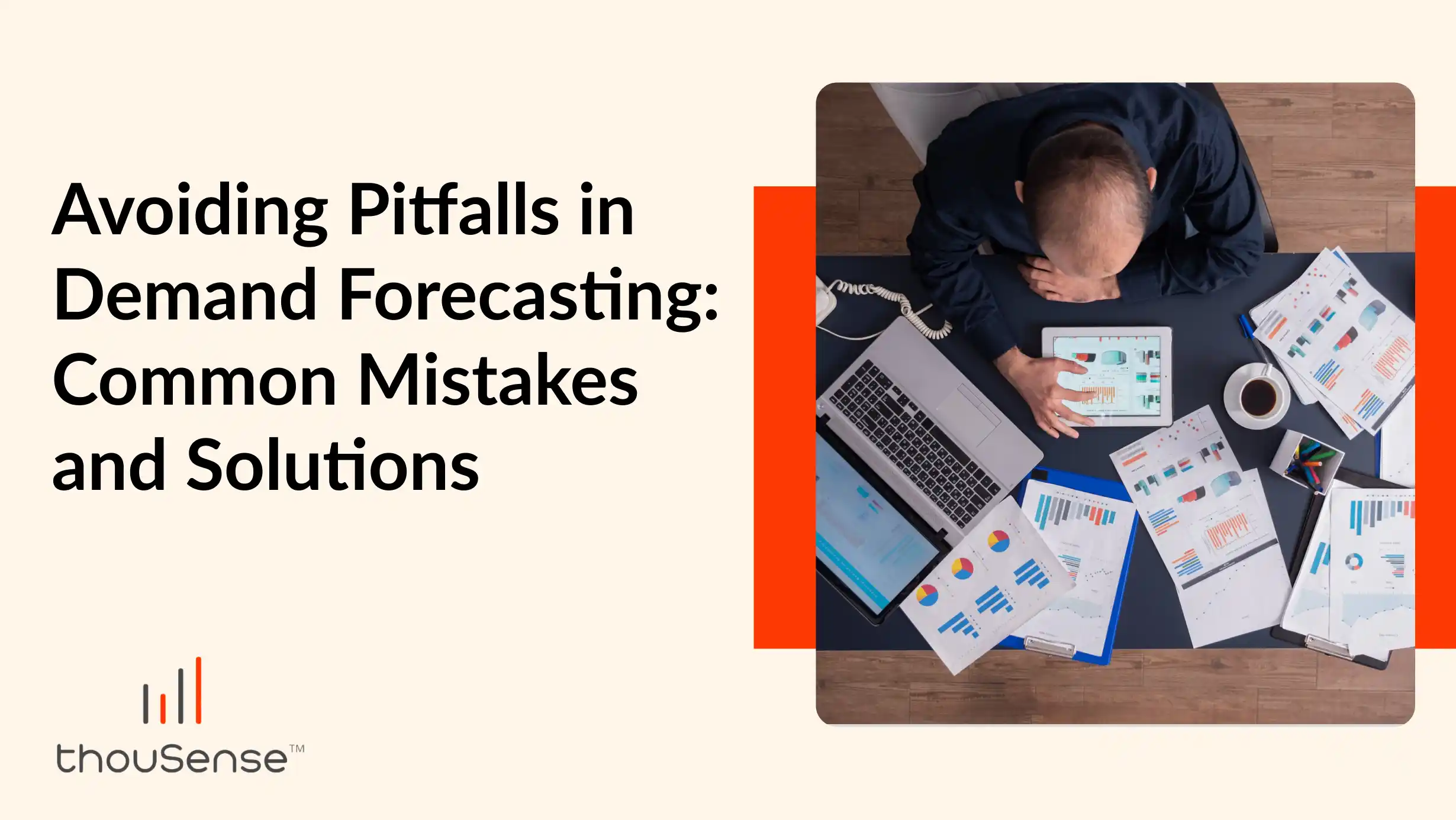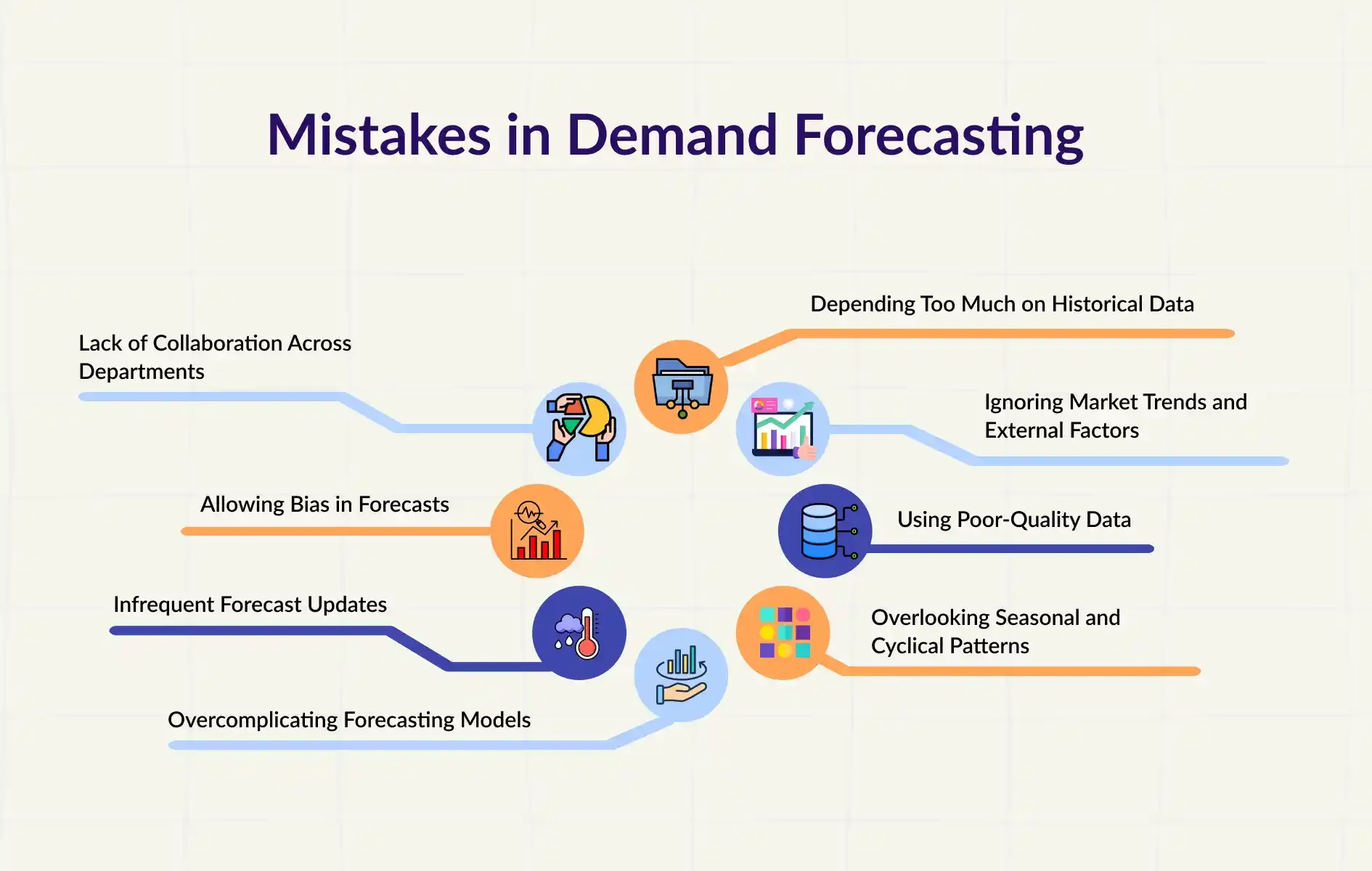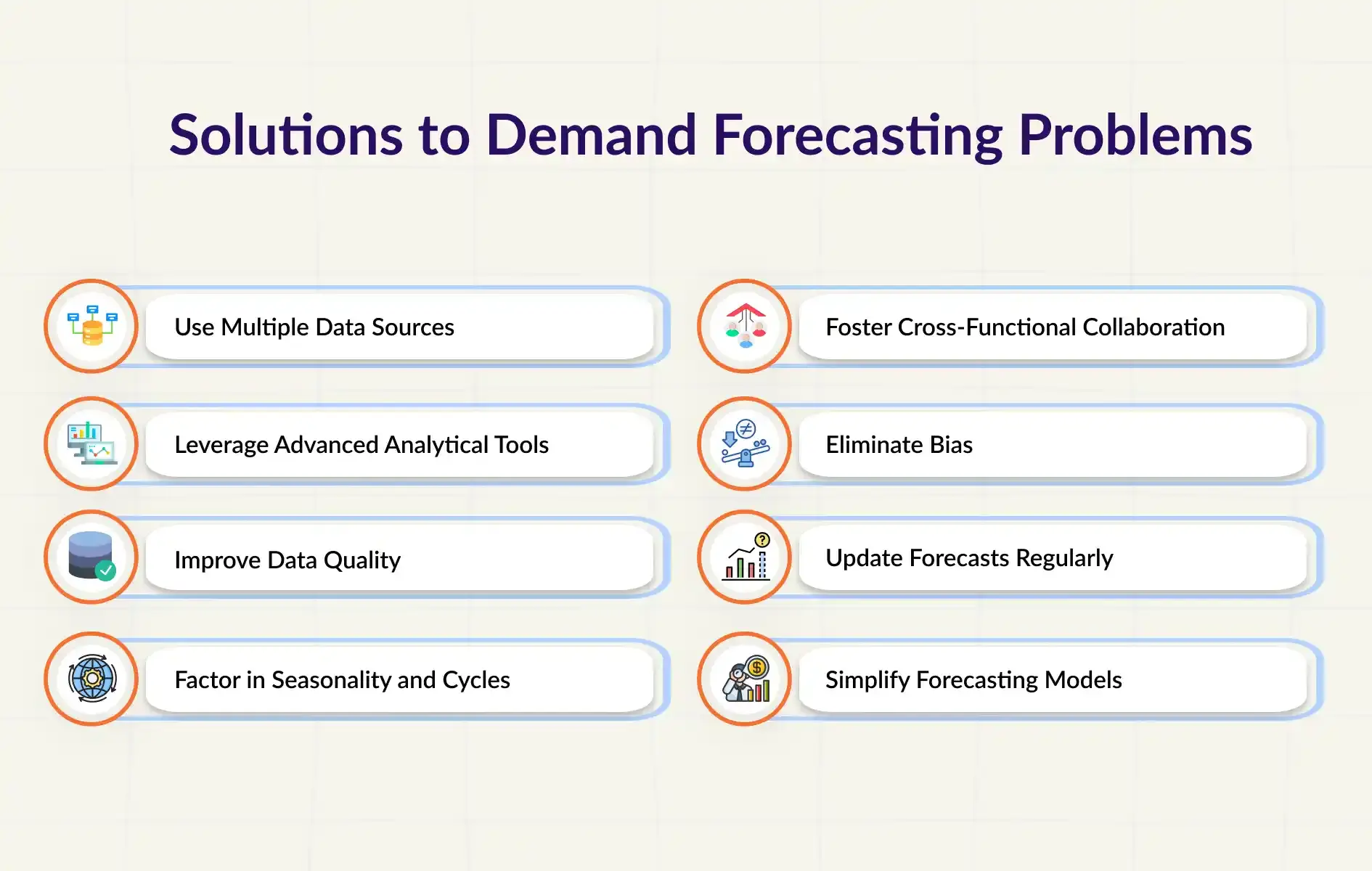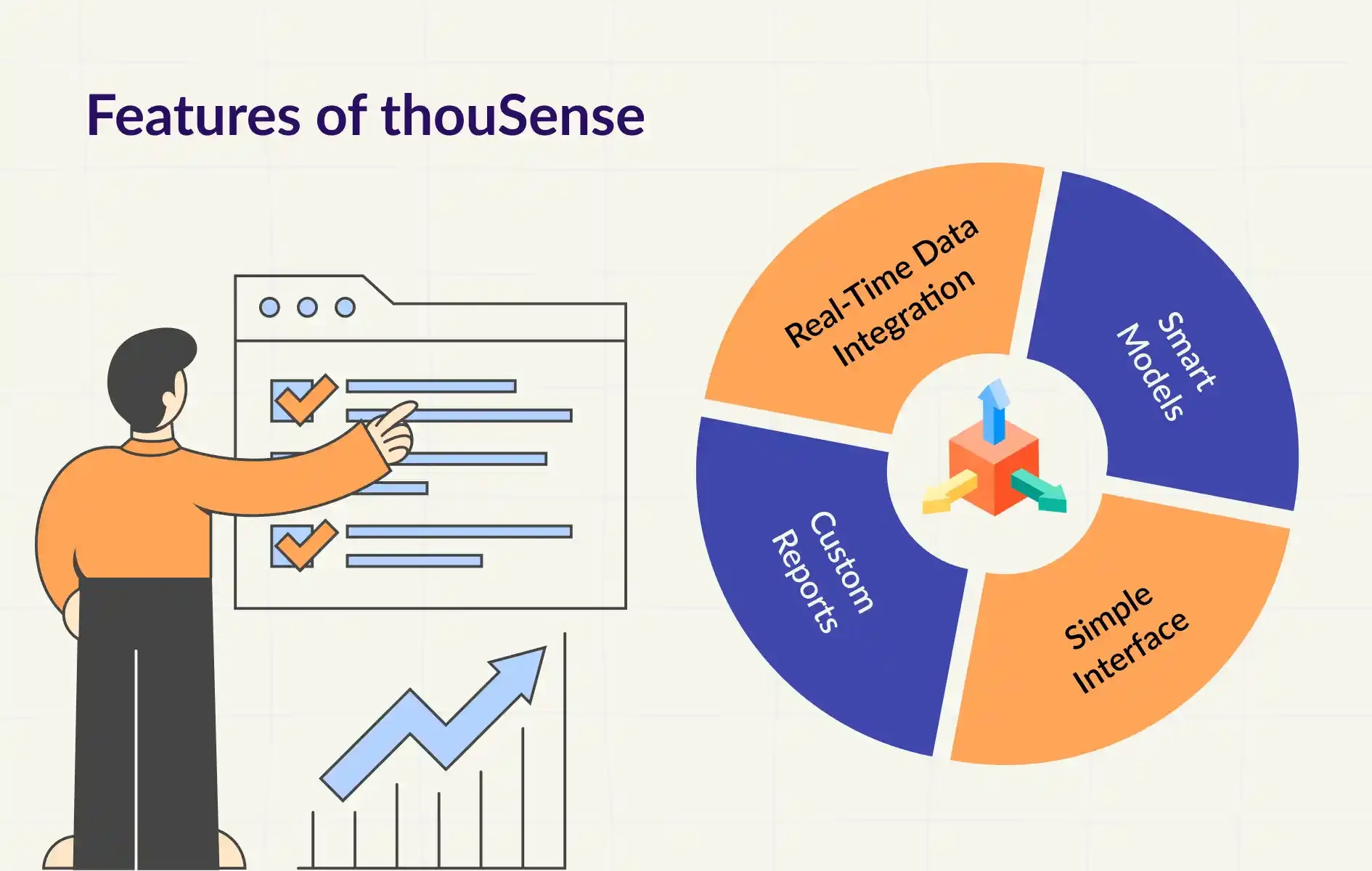Avoiding Pitfalls in Demand Forecasting: Common Mistakes and Solutions

Demand forecasting is essential for businesses. It helps predict how much of a product or service people will need in the future. When done correctly, businesses can manage inventory, plan production, and improve customer satisfaction. However, forecasting can be difficult.
Mistakes in demand forecasting often lead to lost opportunities, wasted resources, or operational inefficiencies.
To avoid such problems, companies need to understand the common pitfalls of forecasting. They also need solutions to improve accuracy.
This blog explores frequent mistakes in demand forecasting and provides practical ways to overcome them.
Common Mistakes in Demand Forecasting

1. Depending Too Much on Historical Data
One major mistake is relying only on past sales data. Historical data is important, but it doesn’t always show future trends. New competitors, shifting customer preferences, or unexpected events can disrupt past patterns. Businesses that depend solely on historical data risk creating inaccurate forecasts.
2. Ignoring Market Trends and External Factors
Demand isn't something that happens automatically. Market trends and external factors like economic conditions, technological advancements, and competition impact demand. Ignoring these variables can lead to forecasts that don’t match reality. For instance, a sudden economic downturn or a new product from a competitor can greatly affect customer demand.
3. Using Poor-Quality Data
The quality of data matters. Forecasting based on incomplete, outdated, or incorrect data often leads to errors. For example, if sales data is not updated or includes mistakes, the forecast will be wrong. Poor data management makes it hard to rely on forecasts for decision-making.
4. Overlooking Seasonal and Cyclical Patterns
Seasonality plays a big role in demand. Some products sell more during specific times of the year. For example, holiday-related items spike during the festive season. Overlooking these patterns can lead to stock shortages or excess inventory. Cyclical trends, like economic ups and downs, are equally important to consider.
5. Lack of Collaboration Across Departments
Forecasting works best when all departments contribute. Sales, marketing, finance, and operations teams often have valuable insights. Without collaboration, forecasts might miss important details. For example, marketing teams might know about upcoming campaigns that could boost demand, but if this isn’t shared, forecasts might be wrong.
6. Allowing Bias in Forecasts
Bias can distort demand forecasts. Sometimes, personal opinions or assumptions influence predictions. For instance, a team might overestimate sales because they are overly optimistic. On the other hand, being too cautious might lead to underestimating demand. Both overconfidence and hesitation can create problems.
7. Infrequent Forecast Updates
Markets change quickly. Sticking to annual or quarterly forecasts isn’t enough. Without regular updates, businesses might miss important shifts in customer preferences or market conditions. Infrequent updates make it hard to stay competitive or respond to sudden changes.
8. Overcomplicating Forecasting Models
Some businesses use overly complex forecasting models. While advanced tools are helpful, complexity can make them hard to understand. If team members cannot interpret the results, the forecast loses its value. Overcomplicated systems can also slow down decision-making.
Solutions to Common Demand Forecasting Mistakes

1. Use Multiple Data Sources
To improve accuracy, businesses should use various data sources. This includes historical data, market trends, competitor analysis, and customer feedback. Combining different data points creates a broader and more reliable view of demand.
Benefits:
● Provides a complete picture of demand drivers.
● Helps businesses adapt to changing conditions.
2. Leverage Advanced Analytical Tools
AI-powered tools can make forecasting easier and more accurate. These tools analyze large datasets quickly and identify patterns humans might miss. They also adjust predictions as new data becomes available. Using advanced demand forecasting tools reduces errors and improves efficiency.
Benefits:
● Saves time and effort.
● Increases forecast accuracy.
3. Improve Data Quality
Data quality is crucial. Businesses should ensure their data is accurate, complete, and up-to-date. Regular audits and strict data management processes help maintain high-quality data. With reliable data, forecasting becomes more trustworthy.
Benefits:
● Reduces forecasting errors.
● Builds confidence in predictions.
4. Factor in Seasonality and Cycles
Seasonal trends and cyclical patterns must be included in forecasting models. Businesses should analyze historical patterns and prepare for predictable demand spikes or slowdowns. For example, forecasting tools can incorporate seasonal adjustments to align predictions with expected trends.
Benefits:
● Prevents stock shortages during peak times.
● Reduces excess inventory during low-demand periods.
5. Foster Cross-Functional Collaboration
Collaboration improves forecasts. Teams from sales, marketing, finance, and operations should share their insights and data. Regular meetings and collaborative tools can help ensure that everyone contributes to the forecasting process.
Benefits:
● Combines diverse perspectives for better accuracy.
● Creates alignment across departments.
6. Eliminate Bias
Businesses need to monitor and correct forecast bias. Comparing actual results with predicted outcomes can highlight patterns of overestimation or underestimation. Adjusting models based on these findings ensures greater objectivity in future forecasts.
Benefits:
● Ensures accurate, unbiased predictions.
● Reduces costly errors caused by assumptions.
7. Update Forecasts Regularly
Frequent updates keep forecasts relevant. Businesses should conduct weekly or monthly updates to reflect current market conditions. This makes it easier to respond to sudden changes in demand or new opportunities.
Benefits:
● Improves responsiveness to market shifts.
● Keeps forecasts reliable and actionable.
8. Simplify Forecasting Models
Forecasting tools should be simple yet effective. Models that are easy to understand and interpret encourage wider use. Simplifying forecasting processes ensures that insights can be applied across the organization.
Benefits:
● Builds trust in the forecasts.
● Encourages better decision-making.
How AI Tools Enhance Demand Forecasting
The Role of AI in Forecasting
AI makes demand forecasting smarter and faster. It can analyze huge amounts of data, find hidden patterns, and adjust forecasts in real-time. AI-powered tools reduce human error and provide more accurate predictions. They also save time by automating repetitive tasks, allowing teams to focus on decision-making.
Features of thouSense

One advanced demand forecasting tool is thouSense. It offers key features that help businesses forecast demand effectively:
● Real-Time Data Integration: Updates forecasts instantly with the latest data.
● Smart Models: Uses machine learning to improve accuracy and adapt to changes.
● Simple Interface: Provides clear insights that are easy to understand.
● Custom Reports: Tailors reports to meet specific business needs.
Why thouSense Is Ideal
thouSense addresses common forecasting challenges. It simplifies forecasting, improves accuracy, and enhances efficiency. By using this tool, businesses can make better decisions and stay ahead of market changes.
Conclusion
Demand forecasting is essential for business success. However, it’s easy to make mistakes, like relying too much on historical data or ignoring market trends. By using multiple data sources, fostering collaboration, and leveraging AI-driven demand forecasting tools like thouSense, businesses can avoid these pitfalls. Accurate forecasts help companies meet customer needs, optimize resources, and remain competitive.
FAQs
1. What is demand forecasting?
Demand forecasting is the process of predicting future demand for products or services. It helps businesses plan inventory, production, and operations.
2. Why do businesses need demand forecasting tools?
Demand forecasting tools analyze data and provide accurate predictions. They save time, reduce errors, and help businesses make better decisions.
3. How does AI improve demand forecasting?
AI analyzes large datasets quickly, identifies patterns, and adjusts forecasts in real-time. This increases accuracy and efficiency.
4. What makes thouSense a good forecasting tool?
thouSense offers real-time updates, advanced machine learning, and an easy-to-use interface. It simplifies forecasting and improves accuracy.
5. How often should forecasts be updated?
Forecasts should be updated regularly, such as weekly or monthly, to stay relevant and reflect current market conditions.